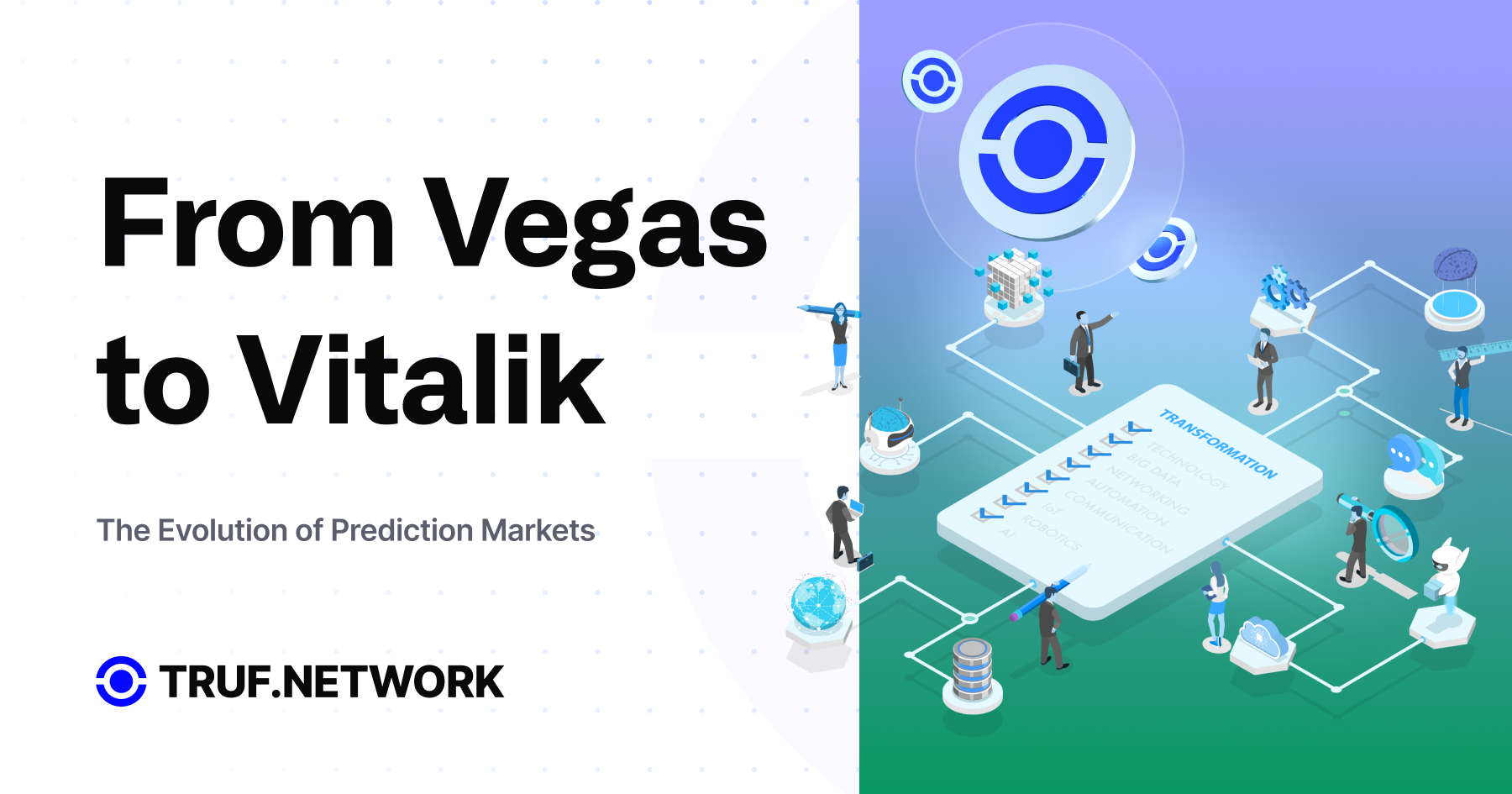From Vegas to Vitalik: The Evolution of Prediction Markets
How betting evolved from sportsbooks to blockchains, and why cryptographic truth is the next revolution.

Humans have always looked for ways to price uncertainty. From ancient farmers hedging harvest risks, to Wall Street quants building derivatives, prediction markets are our attempt to calculate chaos.
What began as basic bets has become a billion-dollar question for developers: How do you design systems where the future itself is a tradable asset; and how do you verify the outcomes?
This is the story of prediction markets as a technological evolution. From centralized bookies to crypto-native platforms, each step exposed limitations around scale, trust, and data. The endgame isn’t just faster bets, it’s autonomous financial systems running on cryptographic truth.
The challenge isn't just building faster betting systems, it's creating autonomous financial infrastructure that can verify outcomes without human intervention, bias or manipulation.
Vegas: Centralized Markets at Scale
The rise of Las Vegas in the mid-20th century industrialized betting. Bookmakers turned odds-setting into a science, balancing liquidity with house exposure. But the industry’s roots were shaky. The 1919 World Series betting scandal (when eight Chicago White Sox players conspired with gamblers to throw the series for approximately $100,000,) exposed the existential risk of centralized operators manipulating outcomes. Trust in sports betting collapsed overnight.
Las Vegas responded not with decentralization but professionalization. Mob-backed casinos brought in statisticians, auditors, and strict internal controls to ensure the integrity of their books (if not their other operations). Odds became more sophisticated, calculated by teams of oddsmakers using early computers and vast paper ledgers. Data flows were still fairly basic, think telegrams, radio updates, and word-of-mouth, but it was enough to keep the system running.
These were closed systems: human-run, data-light, and prone to manipulation when incentives aligned. Transparency was minimal. Scaling beyond jurisdictional limits was impossible.
Online Sportsbooks: APIs and Scaling Pain
The internet’s arrival brought scale. Betfair and Pinnacle showed that peer-to-peer markets could dynamically adjust odds, turning prediction into a collective computation. Betfair's revolutionary exchange model fundamentally changed how odds were set - instead of house-set prices, users could bet against each other, with Betfair taking a commission on winnings.
Developers of these platforms faced new challenges: latency in price discovery, reliance on API feeds for resolution, and growing regulatory friction. Centralized servers remained single points of failure. If your data provider was compromised, so was your market. The 2016 Brexit referendum revealed these vulnerabilities when prediction markets initially showed "Remain" with a 70% probability while trading over £128 million in bets on Betfair alone, yet the markets failed to predict the actual "Leave" result, demonstrating how centralized data feeds and trader biases could distort market signals.
Political Prediction Markets: Proof of Concept, Fragile Infrastructure
Platforms like Intrade and PredictIt extended prediction markets to politics and macro events. They proved that markets could outperform polls in forecasting elections. Research from the Iowa Electronic Markets demonstrated that prediction markets were more accurate than polls in 74% of elections, with the IEM achieving an average prediction error of just 1.34 percentage points in presidential elections since 1992.
But they also revealed deep flaws in infrastructure. Intrade's impressive track record included correctly calling every state except Florida and Virginia in the 2012 election, processing over 1 million transactions involving 23.8 million shares that year alone. Regulatory shutdowns highlighted dependency on legal jurisdictions. Following CFTC legal action Intrade’s platform was suspended permanently in March 2013 citing "financial irregularities." Resolution mechanisms were opaque. For developers, this was a warning: Without independent, verifiable data, your system’s integrity is at risk.
Crypto-Native Platforms: Decentralization Meets Reality
Ethereum smart contracts promised unstoppable markets. Augur pioneered decentralized prediction platforms, removing middlemen. But without reliable data feeds, disputes over outcomes arose. Settlement relied on human reporting and slow resolution systems. While the initial report could occur within 24 to 72 hours, contentious markets could trigger multiple dispute rounds - each typically lasting 7 days. In earlier versions of Augur, these cycles could stretch to 60 days or more. Although the system uses REP token staking to incentivize truthful reporting, it also introduces potential delays, particularly in high-stakes or controversial outcomes.
Polymarket and Zeitgeist improved UX and liquidity, processing $3.7 billion in trading volume during the 2024 US election cycle alone. In October 2024, the platform reached nearly $2 billion in monthly volume with over 191,000 active traders - more than double September's 80,514 users. But it still tethered resolution to centralized APIs. Research has shown that a large chunk of Polymarket's volume may constitute wash trading, raising questions about the platform's true liquidity and market efficiency.
For developers building in the Autonomous Age, that’s unacceptable.
TRUF.NETWORK: Source of Truth Infrastructure for the Autonomous Age
We’re not another prediction platform data source. We’re the infrastructure layer prediction markets, and, in fact, any data-driven financial application, need. By aggregating multiple independent sources, making them composable, and verifying them on-chain, TRUF.NETWORK delivers cryptographic truth in real time.
For developers, this changes everything. No more trust in opaque APIs. No more dependency on single providers. You get globally distributed, independently provable data as a service.
Whether you’re building sports betting apps, climate hedging instruments, or AI-driven geopolitical markets, TRUF.NETWORK ensures outcomes are resolved automatically, without human intervention.
The Endgame: Markets as Autonomous Truth Engines
Prediction markets aren’t just side-projects anymore. They’re critical components of the emerging decentralized finance stack. As smart contracts execute autonomously and AI agents trade on-chain, they need data that is equally autonomous and verifiable.
TRUF.NETWORK will be the backbone making this possible.
In the Autonomous Age, you’re not just coding apps. You’re engineering systems where markets price reality; and reality is verified cryptographically.
